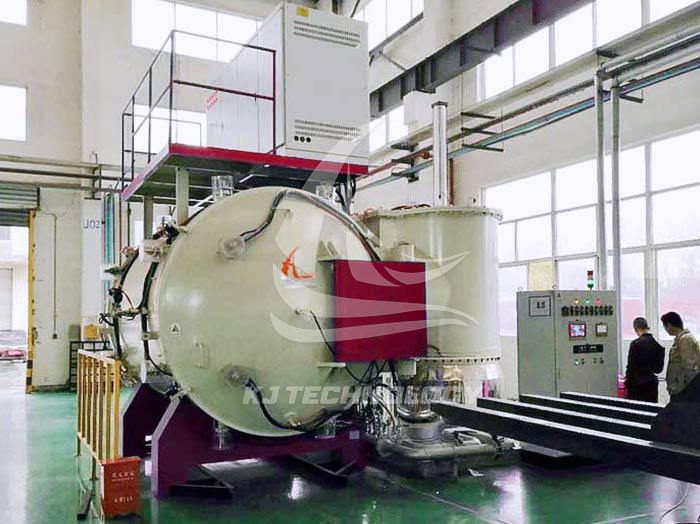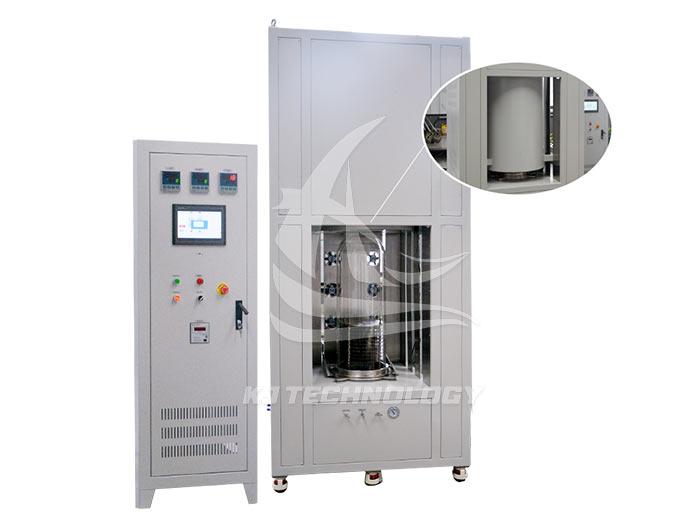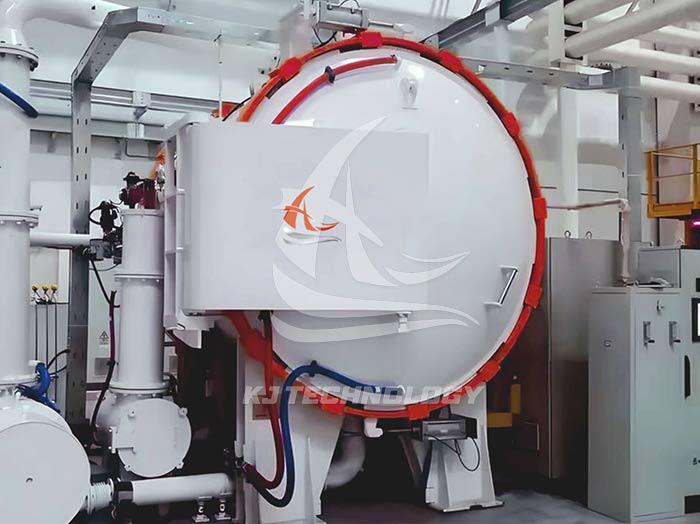Working principle of vacuum atmosphere heat treatment furnace
 05-27-2025 Author: KJ technology
05-27-2025 Author: KJ technology
The working principle of a vacuum atmosphere heat treatment furnace is mainly based on the synergistic effect of vacuum environment and atmosphere control. By precisely regulating the temperature, pressure, and gas composition inside the furnace, specific heat treatment effects of materials under high temperature conditions can be achieved. The following is a systematic explanation from three aspects: core principles, key technologies, and process flow:
1. Core principle
a. The role of vacuum environment
Preventing oxidation: Use a vacuum pump to pump the furnace pressure to the range of 10 ⁻²~10 ⁻⁴ Pa, eliminating reactive gases such as oxygen and water vapor, and avoiding surface oxidation of the material (such as the formation of a brittle oxide layer on titanium alloy when heated in air).
Reduce impurity pollution: Vacuum environment can reduce the risk of gas molecules contaminating materials, especially suitable for annealing treatment of high-purity semiconductor materials (such as silicon wafers).
Promote diffusion reaction: atomic mobility increases under low pressure, accelerating solid-phase diffusion reaction (such as homogenization of alloy elements in the matrix).
b. The necessity of atmosphere control
Inert gas protection: Introduce high-purity nitrogen (N ₂) or argon (Ar) gas to 0.1-1 atm to form a physical barrier to prevent oxidation, commonly used for annealing easily oxidizable metals such as copper and aluminum.
Reactive atmosphere: By accurately proportioning gases such as hydrogen (H ₂) and nitrogen (N ₂), surface modification such as carburizing and nitriding can be achieved (for example, nitriding treatment of steel can increase surface hardness by three times).
Vacuum atmosphere switching: Some processes require vacuum degassing before filling with specific gases (such as vacuum carbonitriding process).
2. Key technologies
a. Vacuum system
Mechanical pump+diffusion pump combination: The mechanical pump pre pumps to 10 ⁻¹ Pa, and the diffusion pump further pumps to below 10 ⁻³ Pa to meet high vacuum requirements.
Vacuum degree detection: Real time monitoring using resistance gauge (low vacuum) and ionization gauge (high vacuum), with an accuracy of ± 10%.
b. Heating and temperature control
Heating method: graded heating with resistance wire (below 1200 ℃), silicon carbon rod (1300~1500 ℃), and silicon molybdenum rod (1600~1800 ℃) to meet different temperature requirements.
Temperature control accuracy: The PID temperature control system is combined with thermocouples (K-type, S-type) or infrared thermometers, with temperature fluctuations of ≤± 1 ℃.
c. Atmosphere control system
Gas flow control: The Mass Flow Controller (MFC) accurately adjusts the gas ratio (such as a 1:9 flow ratio of NH3 to N ₂ in nitriding processes).
Gas purity requirement: Inert gas purity ≥ 99.999%, reactive gas needs further purification.
3. Typical process flow
Taking stainless steel vacuum bright annealing as an example:
Loading and vacuuming
Place the workpiece in the furnace, close the furnace door and start the mechanical pump to pump to 10 ⁻¹ Pa within 10 minutes, then switch to the diffusion pump to pump to 10 ⁻³ Pa.
Heating and insulation
Heat up to 1050 ℃ at a rate of 10 ℃/min and hold for 2 hours, while continuously monitoring the vacuum level (if the pressure rises above 10 ⁻ Pa, stop the machine for leak detection).
Atmosphere protection and cooling
After insulation, fill high-purity nitrogen gas to 0.5 atm, cool at a rate of 5 ℃/min to below 600 ℃, and then cool with the furnace to room temperature.
Discharge and testing
Open the furnace and take out the workpiece. Use a metallographic microscope to detect the grain size (should reach ASTM grade 5 or above), and the surface roughness should be ≤ Ra0.8 μ m.
4. Technological challenges and development directions
Challenge:
Uniformity control of vacuum degree in large furnaces (such as using partitioned pumping technology for furnaces with a diameter of more than 2 meters).
The lifespan of sealing materials under high temperature atmosphere (such as graphite sealing rings with a lifespan of only 50 times at 1600 ℃).
Development direction:
Intelligence: Introducing machine learning to optimize process parameters (such as predicting the optimal insulation time through historical data).
Greening: Developing a hydrogen recycling system to reduce carbon emissions from carburizing processes.
Composite: Combining plasma technology (such as vacuum plasma nitriding) to improve surface modification efficiency.
Through the synergistic effect of vacuum environment and atmosphere control, vacuum atmosphere heat treatment furnaces can accurately regulate the microstructure and properties of materials, and are widely used in high-end manufacturing fields such as aerospace, medical equipment, and semiconductors. With the continuous advancement of technology, it will usher in greater breakthroughs in energy conservation, consumption reduction, intelligent control, and other aspects.








